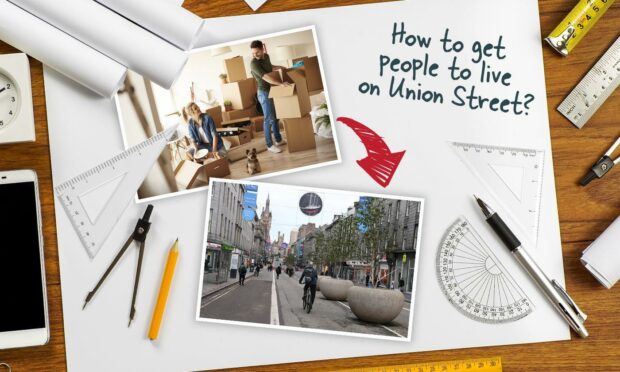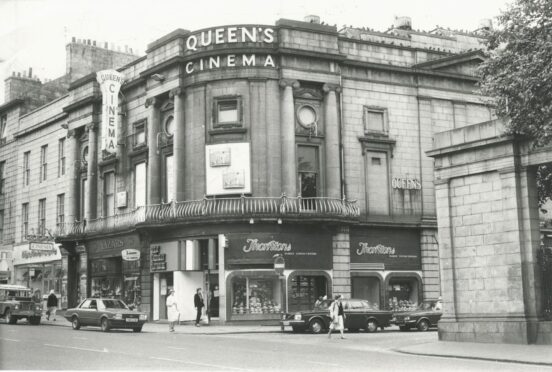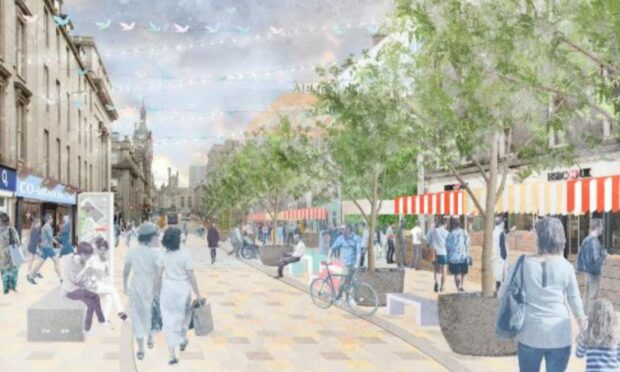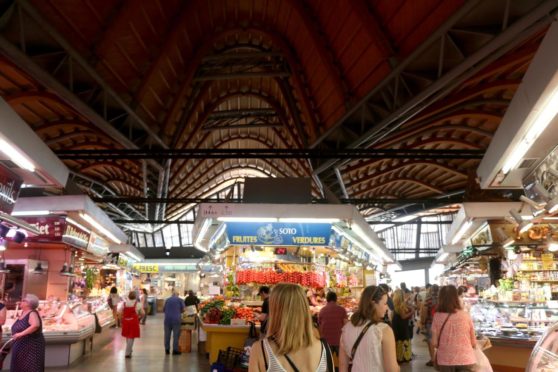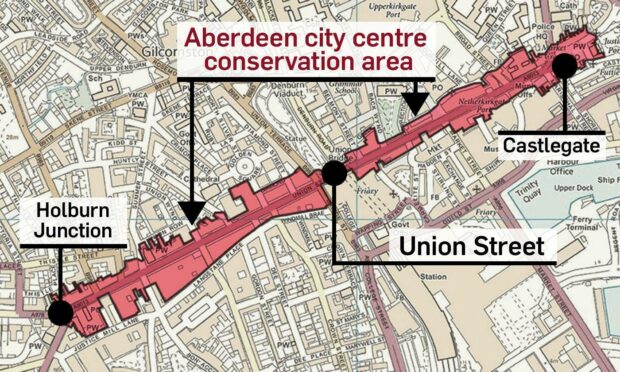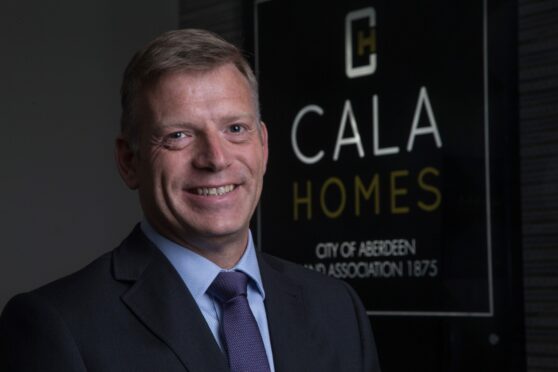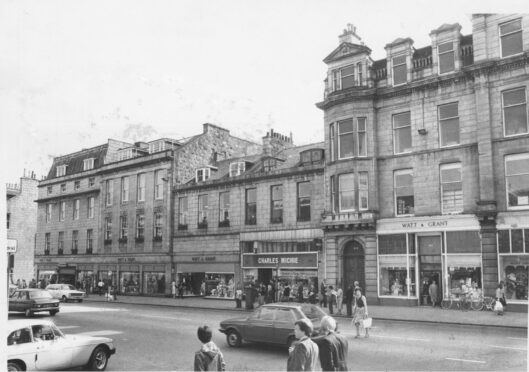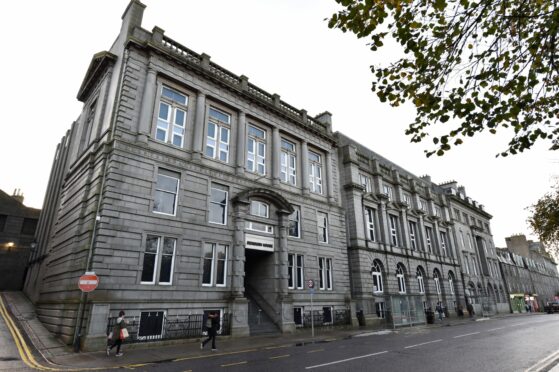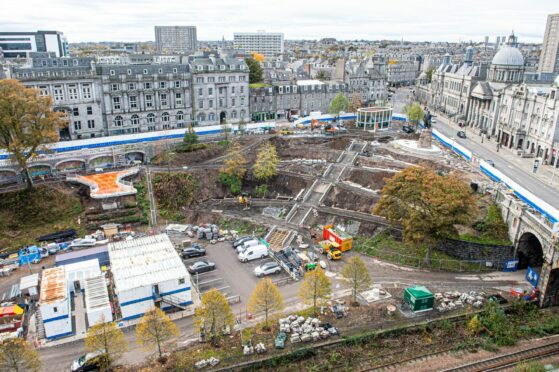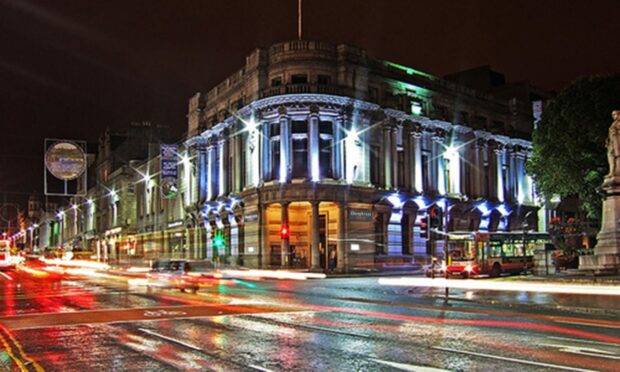For years the Granite Mile thrived as the Aberdeen’s main thoroughfare and shopping street.
At its peak, Union Street would have been the envy of many cities around the world with traders, theatres, hotels and bars cashing in on the oil wealth.
Brightly painted shopfronts made the facades welcoming and, in all honesty, are a far cry from what they are today.
However while business was booming on the ground, the rot was starting to set in above eye level.
Union Street’s upper levels have long been neglected.
In part, that’s because there was never the need to invest in their upkeep.
But now as the importance of city centre living becomes more prominent, we are paying the price for the historic neglect.
The regeneration masterplan, set out by the council’s administration, highlights the importance of this – with an ambition to create more attractive properties at Aberdeen’s heart.
But what needs to be done to encourage investors and developers to commit to injecting cash into our decaying buildings?
Experts on urban development weigh-in on the big questions surrounding getting people to live in Aberdeen city centre…
- Why not every granite building can be saved
- Why it is difficult to attract investors in Aberdeen
- Why it’s pivotal the city council follows through on all its grand ambitions
The proposed new Dons stadium at the beach and BHS revamp may appear to be the most important parts of the ambitious masterplan to onlookers.
But David Dunne, interim head of planning at Aberdeen City Council, said one of its “central planks” is the focus on city centre living.
Because we will never have the same tourist draw as many other European cities, he says we need to find ways our city centre can survive on local spending.
“In order to have a vibrant city centre we must have that mix,” he said.
“We are never going to be an Edinburgh or Barcelona in terms of tourist draw so we will never be able to rely on the outside footfall to maintain our city centre.
“We will always be reliant on our population and, as such, there has always been an aim to get more people into the city centre to live.
“The focus is now specifically around Union Street and the surrounding streets.”
Aberdeen city centre disrepair leads to ‘vicious cycle’
Union Street, like many vibrant high streets around the world, suffered from upper floors falling into disuse over many years.
Mr Dunne explained how the crumbling buildings could lead to a vicious circle.
He said: “There is a cyclical aspect here in that they then fall into disrepair, and people don’t want to live in the area and therefore the city centre deteriorates.”
The council already provides funding through the likes of the Union Street Conservation Area Regeneration Scheme to help with the upkeep of listed buildings on the Granite Mile.
Mr Dunne said the programme is now oversubscribed even after a further £2 million was added to the pot.
Mike Naysmith has more than 20 years of experience in the property industry and is currently managing director at Cala Homes, North.
Cala is considered to be one of the north-east’s first house builders having been established in 1875 as the City of Aberdeen Land Association. It has grown to become one of the UK’s largest house builders.
He said he would love to be able to work with the council to redevelop buildings in the city centre.
But he outlined why green sites are usually more attractive, while speaking at an online event hosted by law firm Brodie’s.
As well as complications arising from planning rules, approvals take more time because of the historic nature of the buildings.
‘We can not keep every granite building’
Could it be that Aberdeen’s beloved granite architecture is part of the problem?
“We cannot keep every granite building in the city,” he said.
“We need to pick the best ones and keep them and make sure their environment stays.
“When we build on a normal greenfield site, we have far more certainty of what the costs will be because we have done it before and we are doing it from the ground up.”
Quite often, developers adapting old granite buildings are entering into projects with no idea what the ultimate price tag will be.
“I have never done a conversion yet and found good news, it’s always bad news, ” he said.
“And unfortunately in a difficult market, like we have in Aberdeen at the moment, that gap between revenue and costs is very tight.”
Mr Naysmith said developers also need certainty on the masterplan – such as reassurance that some of its central tenets are going to be realised.
He added: “We need a masterplan which accounts for that medium and long term, so we know what’s happening, we need certainty for the purchaser.
“People are not going to buy if they don’t know what’s happening to the area around them.”
Richard Harriman is operations director at Mandale Homes, which specialises in converting old buildings including warehouses, factories, mills and – more recently – some vacant retail stores.
They create apartment blocks before packaging them off to a database of investors that operate the buildings as buy-to-rent properties.
Mandale recently decided to look at investing in Aberdeen because of the “amount of opportunity” they saw.
However, the business is finding it difficult to attract investors.
“We ended up converting an old building into 47 units for Hillcrest Housing Association, which was a little bit different to what we would normally provide,” he said.
“After we completed that block we looked at various others, but we have struggled to bring our investors to Aberdeen so it is bringing its challenges.”
Part of the difficulty in developing in the city centre is preserving heritage while creating modern living spaces.
Granite buildings in Aberdeen city centre can lead to red tape wrangles
While developers may be keen to produce apartments with all the latest bells and whistles, their planning applications have to take into account what the council wants.
He added: “At the moment we understand Aberdeen has specific requirements they want to see, so how do you square that circle trying to retrofit what’s needed into a building that doesn’t meet the criteria?
“We’re not talking purpose-built, we are talking refurbished buildings.”
Mr Dunne agreed with Mr Naysmith that not every granite building in the city should be saved.
He said: “Particularly now with energy requirements that are going to come out, there is going to have to be a pragmatic approach taken.
“Union Terrace, with investment in Union Terrace Gardens, will become a more important street in the city.
“We have added complications in these buildings like conservation.
“We have a very high number of listed buildings across the city.
“And the elected members hold granite very dearly, so any changes to these buildings are a challenge at times.
“But fundamentally we need to see those buildings occupied and if they don’t they will deteriorate. That’s just a fact.”
‘Bold action’ needs to be taken to rejuvenate Aberdeen
But, during the webinar held by Brodie’s, all men agreed on one thing.
In order to attract buyers – bold action needs to be taken now.
The ongoing work at Union Terrace Gardens is undoubtedly a step in the right direction, and if it does go ahead, the conversion of the former BHS building into a continental market will be a boost for residents and businesses.
Already, there are a number of former public use buildings being converted into flats so it’s clear there is a market.
The upper floors of the Grade A-listed former Monkey House building are being converted into 14 high-end flats. While in 2017 buyers were able to snap up the new development at the former Frasers department store, Fraser House.
Cater Group has been very active in buying up potential redevelopment sites in the Granite City over the last two years.
They are also are planning to transform the “eyesore” empty Atholl House office block, once home to oil and gas firms and the Crown Office, into 250 flats.
But this is not enough, and that is clear.
Transport links, cycling provision, parking and better connectivity to the rest of the UK are all issues that need urgently addressed if we are to have a city centre fit for modern living.
Mr Harriman added: “One of the things we have found from a tenants point of view is they want to know how close they are to amenities, that is a big thing for them.
“If you’re city centre living you still have to have transport links, you have to be able to cycle, people want to be close to cinema, shops, bowling alleys, that’s the big seller for us.”
Aberdeen needs to become ‘cosmopolitan’
Tracey Menzies is Brodie’s real estate partner and hosted the webinar. She believes we need “fresh eyes” to help shape the city’s future.
“The pandemic has challenged conventions on where we live, work and play,” she said.
“And if we are to reinvigorate Aberdeen city centre, we need to look with fresh eyes at its shape and purpose, and consider all of the elements – private residential, build to rent, commercial units, access to education, transport and healthcare – together, rather than separately.
“While there are challenges to overcome, the opportunity is there for the taking – Aberdeen is fortunate to have much of the required infrastructure in place. The answer to progress lies in a collaborative effort between private and public sector, and ensuring that all demographics – young and senior – are considered when thinking about future residential opportunities.”
Mr Naysmith agreed and said they have had success in other cities, like Birmingham, Edinburgh and Glasgow, with conversions there.
But he reiterated these places are already considered cosmopolitan, leisure and cultural destinations… unlike Aberdeen.
He added: “Aberdeen has to be bold, we are competing on a national level.
“I would love to see Aberdeen being bold and, in 10 years’ time, a cosmopolitan destination where people of all ages are drawn to live.
“Not just because of work but because of the leisure, retail entertainment and lifestyle opportunities that are there and that Aberdeen really becomes a city WITH energy.”
From boom to bust: Why are Aberdeen properties worth less than 10 years ago?
